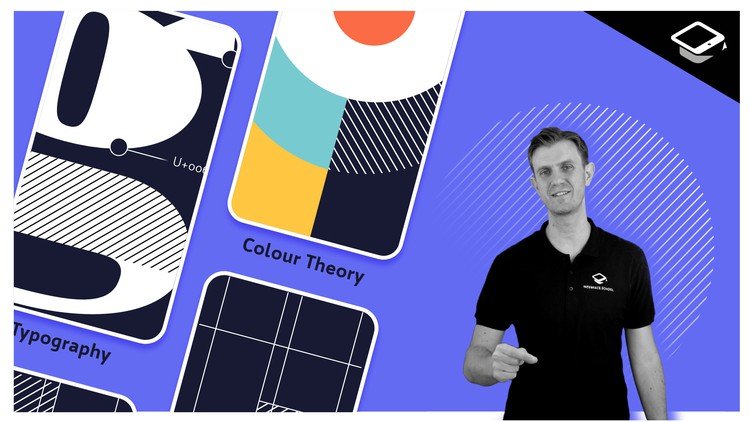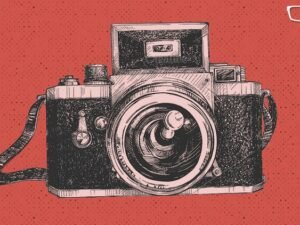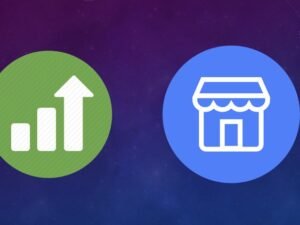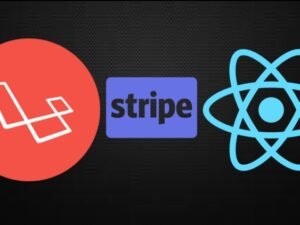- +91 844 9090 904
- info@maximumlearning.io
- Sector 62, Noida, 201309
- Description
- Curriculum
- FAQ
The most crucial aspect to form a great user experience is having a beautifully crafted user interface. Some small changes to your aesthetics can have a huge impact on the experience of your users.
If you’re designing using a web application, you’re making decisions about typography, colour and composition that will affect the branding, style, usability and user experience of your application. You’re already making these decisions but are you aware of their impact. Very subtle use of typography and colour can have enough personality that we don’t need any other visuals. We can give life to a dull block of text and it can make it easier or harder for our users to read. Getting a few simple choices right can make or break the application.
Typography is 95% of what we see on a web application, it dictates every other design decision. yet few people really stop to learn how to use typography to their advantage.
Colour is what makes us differentiate everything in a design. If there was no colour we’d not be able to identify anything on a design. But it also has the most emotional connection of anything in a design and it can’t be easily categorised, as colours appear very different depending on their use and context. We have to use colour, so let’s learn to use colour to our advantage.
A grid makes our designs feel uniform. If we know how to use one, it’s the single thing that can make a design instantly feel more professional. But we need to understand the limitations and advantages of recent web development to create a grid that looks good on paper and still looks good on the web.
What do I get in this course?
To improve your skill in each of these areas: you’ll do a combination of learning some underlining theory, complete challenges to improve your intuition and some practical exercises to create some great-looking designs. A short description of each module is below.
-
Composition: practical exercises to improve your intuition when placing elements on a page
-
Typography: History and background of different type classifications
-
Selecting and Pairing: How to choose a typeface and how to select complimentary typefaces that work together
-
Readability: How do we read and how can we make it easier for people to read with our typographic choices
-
Styling & Formatting: What extra style can we add to our typography and how can we use this to improve our visual hierarchy
-
Grid Systems: The types of grids used in design and some of the technical limitations for modern application design
-
Building our Grid: How to ensure we set up the grids in our design software to work when developing applications
-
Colour Interactions: practical exercises to improve our intuitive use of colour when used in different contexts
-
How Colour Works: The physics behind how light works and how it creates colour
-
Colour Attributes: How to make changes to a colour to make it more useful in your design
-
Create our Pallet: practical steps to create a colour pallet that works specifically for UI
-
Visual Language: Choose photos, icons, illustrations and other visuals to support the design
Is this course for me?
Ideally, you’ll already have spent some time designing websites and/or applications. Every aspect of the course is created with beginners in mind but you may find you get more out of the course if you’ve already created some designs. You’ll also ideally need to know how to use some design software. I recommend Figma, but Adobe XD, Invission Studio, Sketch or some similar software will also be okay.
The course is created with designers in mind but it may also be of interest to front-end developers or product owners. There is a money-back guarantee with no questions asked and you can message me with any specific questions.
Typographic Classifications
Selecting Typefaces
-
15Importance of Typography
-
16Typeface or Fonts
-
17Web Typography
-
18Non Verbal Communication
-
19Anatomy of Type
-
20Printing Press
-
21Serif Typeface
-
22Sans Serif Typeface
-
23Understanding Typography
Test if you've understood the terminology of typography before you continue.
-
24Describe A Typeface
-
25Summary
Readability
Styling & Formatting Text
Grid Systems
-
50Vertical Grid
-
51Visual Hierarchy
-
52Type Scale
-
53Create A Type Scale
-
54Create A Type Scale
-
55Create A Type Scale Challange
-
56Type Hierarchy Challenge
-
57Design Systems
-
58Figma
-
59Sketch
-
60Other Software
-
61Styling
-
62Ligatures
-
63Small Caps
-
64Letter Spacing
-
65Kerning
-
66Paragraph Alignment
-
67Numbers and Date
-
68Typographic Systems
-
69Create A Typographic System
-
70Summary
Building Our Grid
How long do I have access to the course materials?
You can view and review the lecture materials indefinitely, like an on-demand channel.
Can I take my courses with me wherever I go?
Definitely! If you have an internet connection, courses on Udemy are available on any device at any time. If you don't have an internet connection, some instructors also let their students download course lectures. That's up to the instructor though, so make sure you get on their good side!








